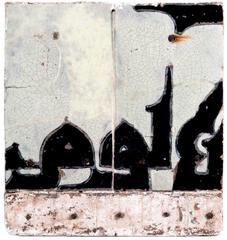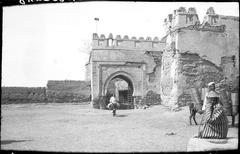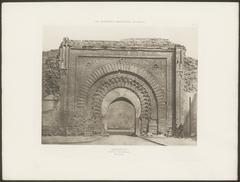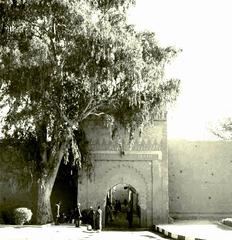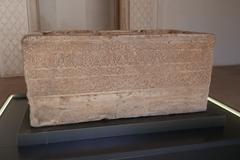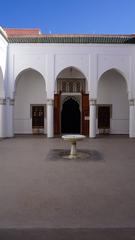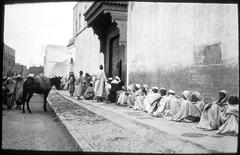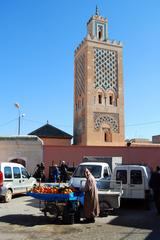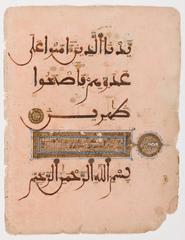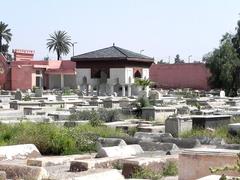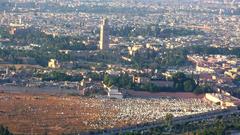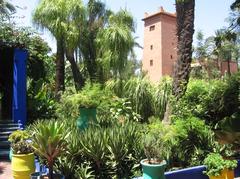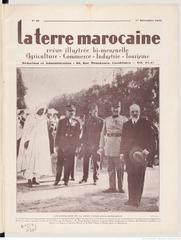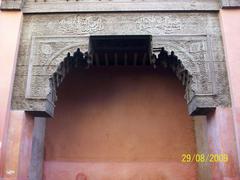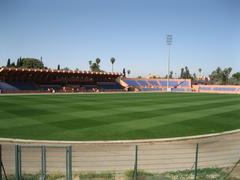Zawiya of Sidi Abd El-Aziz: Visiting Hours, Tickets, and Historical Significance in Marrakesh
Date: 15/06/2025
Introduction
Nestled in the heart of Marrakesh’s bustling medina, the Zawiya of Sidi Abd El-Aziz stands as a remarkable symbol of Morocco’s spiritual and architectural heritage. Dedicated to the revered 16th-century Sufi saint Sidi Abd El-Aziz, one of the famed Seven Saints of Marrakesh, this religious and community complex highlights centuries of devotion, artistry, and local tradition. While its inner sanctum remains reserved for Muslim worshippers, the zawiya’s striking façade, intricate tilework, and rich history make it an essential stop for anyone interested in the city’s spiritual and cultural landscape.
This guide details the historical context, architectural features, visiting regulations, and practical travel advice surrounding the Zawiya of Sidi Abd El-Aziz. Whether you are a pilgrim, a history buff, or a curious traveler, understanding the site’s significance and respectful protocols will enrich your discovery of Marrakesh’s medina.
For further background and visitor information, refer to Petit Futé, GPSmyCity, and Morocco World News.
Table of Contents
- Introduction
- Historical Background
- Architecture and Layout
- Restoration and Preservation
- Visiting Information: Hours, Tickets, and Access
- Travel Tips and Nearby Attractions
- Visitor Experience and Accessibility
- Frequently Asked Questions (FAQ)
- Visual Media
- Conclusion
- References
Historical Background
Origins and Legacy
The Zawiya of Sidi Abd El-Aziz was established to honor Sidi Abd El-Aziz, a renowned Sufi scholar and spiritual leader of the 16th century. As one of Marrakesh’s Seven Saints, his influence extended across religious, educational, and social spheres. The tradition of the Seven Saints pilgrimage, formalized in the late 17th century by Sultan Moulay Isma‘il, positioned the zawiya as a focal point for both spiritual seekers and the local community (Petit Futé).
Initially constructed during the Saadian dynasty, the zawiya was later expanded and embellished under Alaouite patronage, especially during the reign of Sultan Mohammed Ben Abdallah (1746–1790). Throughout its history, the complex has served not only as a mausoleum but also as a center for charity, education, and Sufi brotherhood.
Architecture and Layout
Design and Artistic Features
The Zawiya of Sidi Abd El-Aziz exemplifies Moroccan religious architecture, blending Saadian and Alaouite influences. The mausoleum at its core is distinguished by a square chamber topped with a green-tiled dome—once adorned with a solid gold ornament, symbolizing reverence for the saint (Wikipedia). The exterior features whitewashed walls, a grand wooden entrance, and intricate geometric zellij tilework.
Inside, the mausoleum is adorned with carved stucco, painted cedar ceilings, calligraphic inscriptions, and muqarnas (ornate plasterwork). Surrounding the tomb are courtyards and ancillary rooms, including spaces for prayer and religious instruction. Traditional fountains and arcaded galleries create a tranquil, contemplative environment.
The zawiya is located near Bab Taghzout and Mouassine in the medina, accessible via narrow, vibrant streets lined with shops and cafés.
Restoration and Preservation
Conservation Efforts
Over time, the Zawiya has faced challenges from environmental wear, humidity, and occasional neglect (Morocco World News). Restoration projects—supported by the Ministry of Endowments, city council, and local donors—have aimed to preserve original materials and craftsmanship. The 2024 designation of Marrakesh as the Capital of Culture in the Islamic World brought renewed investment and educational initiatives in heritage conservation (The Marrakesher).
Community involvement remains crucial, with residents and artisans participating in awareness campaigns and restoration programs to ensure the zawiya’s continued vibrancy.
Visiting Information: Hours, Tickets, and Access
- Visiting Hours: The zawiya is generally open to Muslim worshippers from early morning until late afternoon (approx. 8:00/9:00 AM to 6:00 PM). Hours may vary during religious holidays and special events (Petit Futé).
- Entry and Tickets: There is no entrance fee for worshippers. Non-Muslims are not permitted access to the inner sanctum, a policy enforced by signage and staff.
- Guided Tours: While access to the interior is restricted for non-Muslims, guided walking tours often include the exterior, providing cultural and historical context (GPSmyCity).
Travel Tips and Nearby Attractions
- Dress Code: Modest attire is required. Women should consider covering their heads with a scarf in religious areas (Helen in Wonderlust).
- Footwear: Wear comfortable shoes suitable for uneven medina streets.
- Photography: Permitted outside the zawiya; restricted inside to preserve sanctity.
- Nearby Sites: Enhance your visit by exploring nearby landmarks such as the Ben Youssef Madrasa, Almoravid Koubba, Mouassine Mosque, and the lively Jemaa el-Fnaa square (GPSmyCity).
- Navigation: Use offline maps or GPS apps; be cautious of unsolicited guides (Introducing Marrakech).
- Facilities: Public restrooms are limited; plan accordingly.
- Safety: Keep valuables secure, stay hydrated, and take breaks at local cafés.
Visitor Experience and Accessibility
- Getting There: Accessed on foot via the medina’s labyrinthine alleys. Taxis drop off at gates like Bab Doukkala or Bab Taghzout.
- Accessibility: The historic setting poses challenges for wheelchair users and those with limited mobility due to narrow, uneven streets and steps.
- Language: Basic Arabic or French is helpful; signage is primarily in these languages.
Frequently Asked Questions (FAQ)
Q: What are the visiting hours?
A: Generally from 8:00/9:00 AM to 6:00 PM, but check locally for variations during holidays.
Q: Is there an entrance fee?
A: No, entry is free for worshippers; donations are appreciated.
Q: Are non-Muslims allowed inside?
A: No, the inner sanctum is reserved for Muslims. Non-Muslims may view the exterior.
Q: Can I take photographs?
A: Yes, in exterior areas. Photography is not permitted inside the mausoleum.
Q: Are guided tours available?
A: Many local guides offer tours that include the zawiya’s exterior and contextual insights.
Q: Is the site accessible for people with disabilities?
A: Accessibility is limited; contact local tourist offices for assistance if needed.
Visual Media
- Include high-quality images of the Zawiya’s exterior, courtyards, and tilework with descriptive alt text such as “Zawiya of Sidi Abd El-Aziz Marrakesh courtyard with traditional Moroccan tilework” or “Entrance to Zawiya of Sidi Abd El-Aziz in Marrakesh medina.”
Conclusion
The Zawiya of Sidi Abd El-Aziz stands as a living testament to Marrakesh’s deep spiritual roots and enduring artistic traditions. While non-Muslims may only admire its beauty from the outside, the site’s atmosphere, history, and surrounding medina provide a culturally rich and memorable experience. Complement your visit with nearby landmarks and consider using digital resources such as the Audiala app for interactive maps and audio guides. By respecting local customs and supporting preservation efforts, you help safeguard Marrakesh’s spiritual heritage for generations to come.
Explore More:
- Download the Audiala app for guided audio tours of Morocco’s spiritual landmarks.
- Follow us on social media for travel tips and cultural insights.
References
- Petit Futé Zawiya of Sidi Abd El-Aziz
- GPSmyCity Guided Tours
- Morocco World News: Restoration and Preservation
- The Marrakesher: Cultural Preservation in Marrakesh
- Helen in Wonderlust: Marrakesh Travel Tips
- Introducing Marrakech: Tips
- Wikipedia: Zaouïa de Sidi Abdelaziz
- GPSmyCity: Marrakech Top Religious Sites Tour
